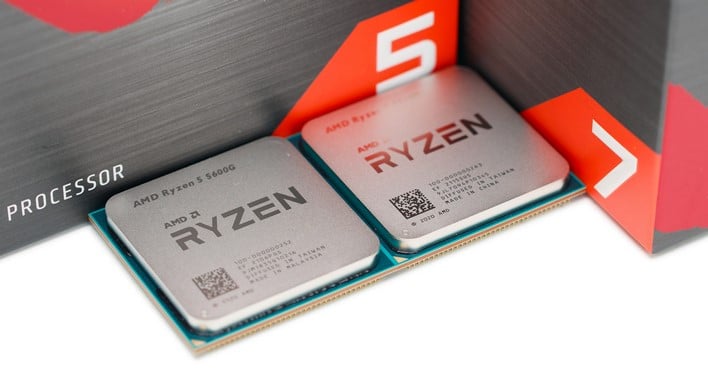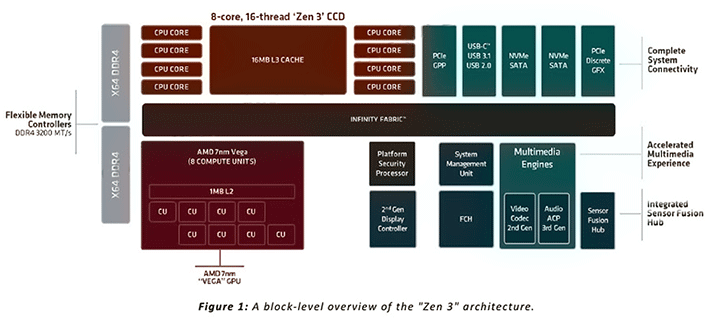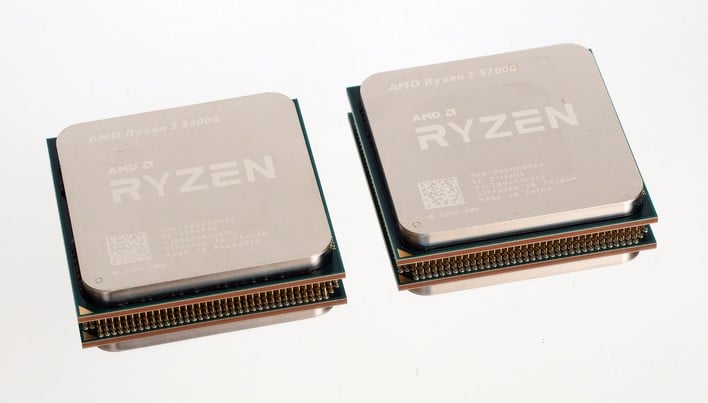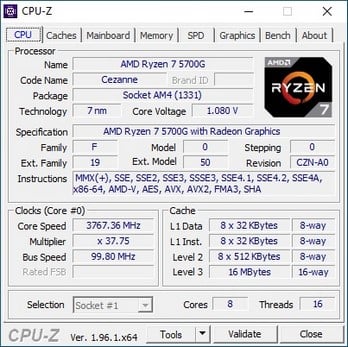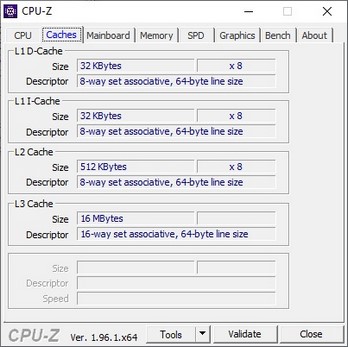AMD Ryzen 5000G Series Review: Zen 3 APUs Deliver Big Value
AMD Ryzen 5 5600G And Ryzen 7 5700G: Zen 3 And Vega Desktop APUs
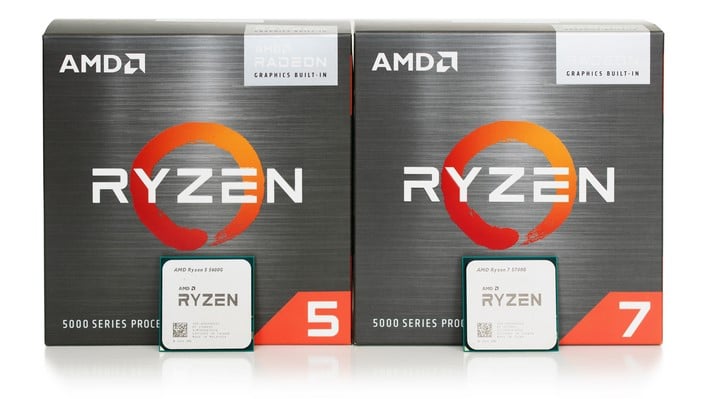
These particular processors, however, mark somewhat of a departure from similar, previous-gen AMD products. While Ryzen 3000G series APUs were relegated to entry-level systems with a maximum of 4 cores and somewhat tame CPU and GPU clock speeds, Ryzen 5000G APUs crank things up a few notches by offering up to 8 cores, with max CPU boost clocks exceeding 4.4GHz, faster memory support, and significantly higher GPU clock speeds as well. The on-die graphics, however, are still based on AMD’s Vega GPU architecture. Of course, AMD did technically release Ryzen and Ryzen PRO 4000G series processors with higher clocks and core counts too, but those were OEM-only processors and weren't meant to be sold at retail.
AMD is targeting more mainstream applications with the Ryzen 7 5700G and the Ryzen 5 5600G versus standard Ryzen 5000 series processors. Both chips feature a 65W TDP and slot right into AMD’s socket AM4 platform. These processors will essentially work with any 400 or 500 series chipset-based motherboards, provided the manufacture has updated the board's BIOS with the necessary AGESA. AGESA 1.1.8.0 is required to POST/boot these APUs, but AGESA 1.2.0.3b (or newer) is recommended for optimal performance.
AMD Radeon 5000G APU Features And Specifications
The Ryzen 7 5700G is obviously the higher-end model of these two CPUs. It is an 8-core / 16-thread processor with 4MB of L2 cache and 16MB of L3. Those CPU cores are mated to an 8 CU Radeon Vega graphics engine, and it has 24 lanes of PCIe Gen 3 connectivity. The 5700G’s base CPU clock is 3.8GHz, with a maximum boost clock of 4.6GHz. The on-processor GPU can boost up to 2GHz, which is a massive uptick from the 1.4GHz of previous-gen 3000-series APUs. The Ryzen 5 5600G takes things down a notch with 6 CPU cores (12 threads), and a commensurately smaller 3MB of L2 cache; the L3 cache size remains unchanged, though. The iGPU is scaled down slightly as well, and has only 7 CUs. At 3.9GHz, the 5600G’s base clock is 100MHz higher than the 5700G’s, but its max boost lands at 4.4GHz. The iGPU has a slightly lower 1.9GHz maximum clock speed too. AMD is positioning these two APUs against the Intel Core i7-11700 and Core i6-11600. The Ryzen 7 5700G’s suggested price is $359 and the Ryzen 5 5600G is a full $100 less at $259. Both of those prices are exactly in-line with Intel’s competitive offerings. Looking at current pricing for the Ryzen 7 5800X and Ryzen 5 5600X, however, these new APUs arrive at significantly lower pricing, which is great considering their similar CPU core counts with essentially a “free” GPU thrown in.
The key ingredient that made the Ryzen 7 5700G and the Ryzen 5 5600G possible is AMD’s Infinity Fabric. The flexibility of the Infinity Fabric to link various IP on-die, in conjunction with AMD’s current CPU architecture, essentially allowed AMD to drop Zen 3 into the design as a replacement to the previous-gen Zen 2 architecture. With these chips, an up-to 8-core / 16-thread Zen 3 CCD is linked to an up-to 8 Compute Unit Radeon Vega iGPU and adjacent multi-media engines. The chips are produced on TSMC’s 7nm node, and the processors drop right into AMD’s existing socket AM4 ecosystem – again, assuming the motherboard has been updated with the necessary AGESA (which is probably has been).
From the outside the Ryzen 7 5700G and Ryzen 5 5600G look just like all of AMD’s current mainstream processors. The packaging, pin-out, integrated heat-spreaders and branding are all the same. It’s only the model number emblazoned on top that changes.
Firing up the latest edition of CPU-Z gives a glimpse into the configuration of these new Ryzen 5000G-series processors. There’s 64KB (32KB data + 32KB instructions) of L1 cache per core, 512KB of L2 cache per core, and a single pool of 16MB of L3 per CCD on board. Clocks and voltages will vary based on load (more on this later in the overclocking section), and the family, model, stepping and revision are identical between the 5700G and 5600G.
With all of that out of the way, let’s see how these latest APUs perform, shall we?

